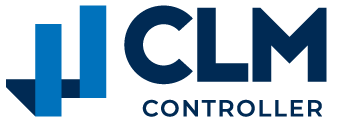There are numerous options on the market, but it’s best to choose those that fit your routine. This way, you can track the various stages of a project, regardless of the methodology you employ. Some apps are even tailored for teams working with Scrum, the agile method for project management.
1. Trello
When it comes to task tracking, Trello is an unmissable mention. Based on the Kanban methodology, this app divides projects into smaller activities that are easier to manage.
You can create cards and boards, where each card represents a task and belongs to one or more boards. As your project progresses, you move the cards across different columns to indicate their status.
For example: imagine a project where one stage involves evaluating legacy systems. In this case, you would create a board for the project and columns for each stage: “To Do,” “In Progress,” and “Done” (or any other format you prefer).
Within each column, you can insert as many cards as needed, such as one labeled “Legacy System Evaluation.” Once this process begins, move the card to “In Progress,” and when completed, to “Done.”
Trello’s intuitive design and ease of use make it a standout tool. You can also attach files, add comments, assign team members, label tasks, and much more.
Additionally, Trello offers a clear visualization of workflows, making it easy to identify bottlenecks. If a stage stalls for too long, you can investigate and address the issue effectively.
2. Asana
Looking for a tool to manage group activities? Asana is a perfect choice! This app offers practical features like calendars with participant visibility, chat forums, discussion boards, and task lists.
One of its standout features is the ability to see what each team member is working on, allowing you to assign the next steps efficiently. The built-in chat feature also simplifies communication, providing a quick and direct channel for collaboration.
Additionally, Asana lets you visualize progress through graphs that track team performance. This helps measure individual productivity and workload distribution effectively.
3. Nirvana
Nirvana uses the Getting Things Done (GTD) methodology to manage tasks. Created by David Allen, this method focuses on capturing thoughts and transferring them into an external system, allowing individuals to concentrate on what truly matters.
With Nirvana, users can implement GTD’s five productivity stages:
- Collect: Record everything in one place, like an inbox or list.
- Process: Assign meanings, set deadlines, and establish priorities.
- Organize: Sort tasks by project and department.
- Execute: Focus on smaller tasks first and work through them one at a time.
- Review: Regularly check progress to ensure alignment with goals.
Nirvana provides a clear view of commitments and helps prioritize them, leading to better IT team management and improved results.
4. Slack
Though primarily a communication tool, Slack replaces email for faster, more dynamic conversations. This makes it easier to handle low-impact project tasks while fostering greater team interaction.
How does this help IT teams? By grouping professionals into specific teams, Slack facilitates discussions, experience sharing, and quick help requests.
Slack also functions as a task management tool by enabling team members to report what they’ve completed and what’s next. This eliminates communication gaps, reducing delays and ensuring client satisfaction.
5. Runrun.it
Developed in Brazil, Runrun.it is an excellent tool for managing processes, tasks, and resources. It generates reports on project deadlines, costs, and individual team member performance.
Runrun.it makes it easier to demonstrate IT’s contribution and the return on investment (ROI) it generates. The platform tracks project costs and calculates the hourly rates of team members.
With its detailed reports, you can identify bottlenecks, time-consuming tasks, and responsibilities for each period. This makes it easier to monitor progress and overcome obstacles efficiently.
6. Quire
Quire simplifies task management by displaying activity details in a side column. Each task appears as a line, and clicking it reveals key information.
This app is dynamic and modern, offering two main sections for streamlined management. Key features include:
- Marking completed tasks for removal from the list.
- Adding attachments.
- Creating schedules.
- Uploading finished work.
- Using tags to categorize tasks.
[See more]: SUCCESSION PLANNING VIA HOLDING: HOW DOES IT WORK?
7. Wunderlist
Perfect for IT teams and professionals managing personal and professional tasks, Wunderlist offers frequent alerts for ongoing activities and organizes them by priority.
Highlighting crucial tasks ensures they aren’t overlooked. For larger teams, managers gain a clear view of responsibilities at each stage, enabling them to track progress and measure outcomes effectively.

